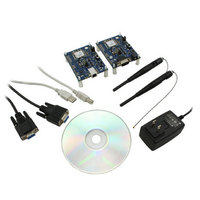DVK-PRM112 Laird Technologies, DVK-PRM112 Datasheet - Page 17

DVK-PRM112
Manufacturer Part Number
DVK-PRM112
Description
KIT FOR PRM112
Manufacturer
Laird Technologies
Series
FlexRF™r
Type
Transceiver, FHSSr
Specifications of DVK-PRM112
Frequency
2.4GHz
Output Power
50 mW
Antenna
U.FL Coaxial
Silicon Manufacturer
Laird Technologies
Kit Application Type
Communication & Networking
Application Sub Type
RF Module
Kit Contents
2x RF Module, 2x Adapter Board, CD, 2x AC Power Adapters, 2x DB9
Rohs Compliant
Yes
For Use With/related Products
PRM112
Lead Free Status / RoHS Status
Lead free / RoHS Compliant
Lead Free Status / RoHS Status
Lead free / RoHS Compliant, Lead free / RoHS Compliant
Available stocks
Company
Part Number
Manufacturer
Quantity
Price
Company:
Part Number:
DVK-PRM112
Manufacturer:
LAIRD
Quantity:
2
LT2510
Wireless Module
THEORY OF
OPERATION
14 www.lairdtech.com
Full Duplex (EEPROM 0x56, bit 1)
In Half Duplex mode, the transceiver will send a packet out over the RF immediately. This can cause packets sent at
the same time by a server and a client to collide with each other over the RF. To prevent this, Full Duplex Mode can
be enabled. This mode reserves a transmit “slot” for the server. If the server does not have any data to transmit,
clients are permitted to transmit during that time. If the server does have data to send, clients will not be permitted
to transmit during that slot. Likewise, the server will not be able to transmit during a client slot. Though the RF
hardware is still technically half duplex, it makes the transceiver seem full duplex. This can cause overall throughputs
to be cut in half.
Note:
Auto Config (EEPROM 0x56 bit 0)
The optimal settings for Interface Timeout and RF Packet Size vary according to the selected RF Profile and Interface
Baud Rate. Enabling Auto Config will bypass the value for these variables stored in EEPROM and use predetermined
values that have been optimized for the given mode. When Auto Config is disabled, these values must be
programmed in the transceiver EEPROM.
Auto Channel (EEPROM 0x56, bit 3)
To allow for more flexible network configurations, Auto Channel can be enabled in clients to allow them to
automatically synchronize with the first server they detect, regardless of channel number.
Note:
Auto System ID (EEPROM 45, bit 4)
When enabled this will allow a client to attach to any server on the same RF Channel, regardless of the System ID on
the server or the client.
Auto Destination (EEPROM 0x56, bit 4)
To simplify EEPROM programming, Auto Destination can be enabled in the radio which allows the radio to
automatically set its destination to the address of the radio from which it last received a successful transmission
from (beacon or data packet).
Broadcast (EEPROM 0xC1, bit 7)
In Broadcast mode, the transceiver will transmit the packet to all transceivers with the same Channel Number and
System ID settings. There is no RF acknowledgement sent from the recipient(s) back to the transmitter, therefore the
packet is sent out the number of times specified by Broadcast Attempts.
Unicast Only (EEPROM 0xC1, bit 3)
To prohibit transceivers from receiving broadcast packets, Unicast Only can be enabled. Unicast Only restricts the
transceiver to only receive addressed packets.
Nine Bit Mode (EEPROM 0x57, bit 1)
With Nine Bit mode disabled, the transceiver communicates over the asynchronous serial interface in 8-N-1 format
(8 data bits, No parity, 1 stop bit). Some systems require a parity or 9th data bit. Enabling Nine Bit Mode causes the
transceiver to communicate using 8-1-1 format (8 data bits, 1 parity bit and 1 stop bit). In this mode, the transceiver
will not validate the parity bit but simply transmits it over the RF. This is useful as some systems use the ninth bit as
an extra data bit and not just a parity bit. However, because the ninth bit is transmitted over the RF, enabling Nine Bit
Mode cuts the transceiver interface buffer size by 1/9 and reduces the RF bandwidth by the same ratio.
Legacy RSSI (EEPROM 0x45, bit 2)
RSSI (Received Signal Strength Indicator) is a measure of how well the receiving radio is able to hear the transmitting
radio. By default, RSSI is reported in 2’s complement format, therefore, values range from 0x80 - 0x7F. Many
preceding products have, instead, reported RSSI in the range of 0x00 - 0xFF. Legacy RSSI causes 0x80 to be added
to the RSSI result prior to reporting it to the host.
9600 Boot Option (EEPROM 0x57, bit 0)
When enabled, 9600 Boot Option causes the 9600 pin to be ignored on cold boot (power-up) and brown-out
conditions. Therefore, the 9600 pin is only observed on warm boots (reset pin toggled). This can be helpful so that
brown-out conditions don’t cause the baud rate to change if the 9600 pin happens to be Low at the time. When
9600 Boot Option is disabled, the 9600 pin will be used for warm and cold boots as well as brown-out conditions.
All transceivers on the same network must have the same setting for Full Duplex.
A client with Auto Channel will only synchronize with a server having a matching System ID
Laird Technologies



















